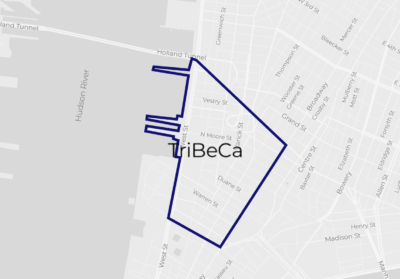Generating Real Estate
Leads
It’s my mission to teach you the techniques I’ve used to go from a failed actor with no connections in the real estate industry to becoming the most followed real estate brand in the world. During my first year in the business, I made just $9,000. Today, I run my own successful real estate firm based on the techniques I figured out for getting real estate leads and securing sales.
The biggest challenge for any real estate business is generating quality sales leads, and it’s your main job as a real estate agent. Referral networks, mailers, and going door-to-door used to be enough, but these techniques alone won’t cut it in the modern market. Sure, the old methods are still important. But combining them with digital marketing and social ads is the best way for agents to generate leads today. Social media is perhaps the greatest gift ever given to the real estate industry. It makes it possible to create targeted ads for different audiences and generate a higher number of real estate leads than ever before.
Without further ado, here are six of my proven methods on how to get real estate leads.
1. Use the GPC framework.
Before you can start effective real estate lead generation with social ads, you need to think about a few things. What is your goal for each ad campaign? Which platforms will you be using? What kind of content will you use to communicate your message? That’s what my GPC framework stands for—Goals, Platform, and Content.
Goals
I recommend utilizing the SMART goals approach when you’re defining your goal for each lead generation ad. You may remember this from school, but if not, SMART stands for specific, measurable, attainable, relevant, and time-bound.
You must be as specific as possible with each goal to tell if your ads are valuable and getting you real estate leads. Do you want to generate more business in general? Are you trying to get more eyes on your listings on your real estate website? Answering questions like these will make it easier to measure progress toward your goal. It’s also important to set realistic goals, which you can base on your past performance. If you typically generate five real estate leads per week, it won’t be realistic to scale to 100 leads immediately. You’ll also need a timeframe to accomplish each goal since a goal without a timeframe is really just a dream.
Platform
Once you determine your goal, you can hone in on what platform makes the most sense to achieve it. For the purposes of my courses, I focus entirely on Facebook and Instagram ads, as I’ve found that the Facebook Ads Manager has the most robust tools for our needs in the real estate market. Instagram is owned by Facebook, so you can essentially use the same ad manager for your goals there as well.
Content
Finally, the “C” in GPC is the content for your ad. This includes the text, photo, video, and any other elements that communicate your message. The most essential element is your call to action (CTA). This is what you want potential leads to do with the information you’ve just given them. A good CTA will inspire potential leads to click on your lead magnet and fill out the lead form. Any information they enter will then feed into your CRM system. It’ll usually look something like this:
SIGN UP NOW FOR THE FULL COURSE
2. Follow a proven ad campaign structure.
Now that you understand the GPC framework to generate leads with social media ads, I can share my Facebook ad campaign structure with you. Most real estate professionals will be able to meet their goals using a combination of lead ads and listing ads. Each type of ad will have a similar campaign structure, with the main difference being the call to action.
For lead ads, your goal is to find new leads on buyers and sellers. The CTA for your lead ads is to get potential clients to fill out your lead form. Here they’ll describe their interest in your services and provide their contact information. Lead magnets are what you use to get potential clients to that point. In other words, it’s the content of your ad. You need valuable and relevant content that your target audience can identify with. One of the most popular lead magnets we like to use is our neighborhood guides. These guides are informative for both buyers and sellers, and they’re an easy way to get virtually anyone interested in our services.
When it comes to your listing ads, you’re trying to generate inquiries for the properties you have for sale. These will have nearly the same structure as your lead ads—you’ll just be using a different CTA. For these ads, your CTA will invite potential customers to learn more about your properties by filling out your lead form. From this point, their information will go into your CRM, the same as with lead ads.
3. Create powerful lead magnets.
Once you understand the general structure of your ads, you can start developing your lead generation strategy by creating the most effective lead magnets possible. Your lead magnet is the first impression that most new clients will have of your real estate business, so it’s important that your magnet represents your personal brand accurately and includes valuable information that your potential leads need.
I’ve already mentioned the neighborhood guides that we use at my company, and our most popular guide is probably the TriBeCa neighborhood guide. This is a complete guide on things to do in the neighborhood, the parks, the restaurants, and even information on which celebrities live in the area. A detailed neighborhood guide like this will bring in a lot of people. Your leads will realize they need your services when you present them with insider information like this.


Of course, there are all sorts of templates you can use to create great lead magnets. Test out a few options; Maybe a guide on how to choose the best real estate agent or an ad for free home evaluations. An effective lead magnet is one that’s relevant to the services you provide and that targets a specific audience. The lead magnet chapter in my full Social Ads course even includes a downloadable worksheet that you can use to create the best lead magnets for your business.
4. Become a master of follow-up.
Think about all the time and money you’ll put into finding qualified leads by following the tips I’ve given you so far. Would you want even one of those leads to slip away? You shouldn’t! Once you’ve found an ad campaign and lead magnet that lands your first client, your goal should be to convert every lead you get. You aren’t putting in all this effort just to let it go to waste. Follow up, follow-through, and follow back with every single one. If there’s a single secret that I want you to take away from this, here it is. Follow up on your leads until they die. That’s my secret sauce.
5. Understand Facebook’s ads auction.
There’s a famous quote from the 1920s advertiser John Wanamaker that states, “Half the money I spend on advertising is wasted. The trouble is, I don’t know which half.” What he’s saying is that it’s difficult to know which of your ads are actually being seen and if your target audience is actually seeing them.
With the Facebook Ads Manager, you won’t have this problem. You’ll be able to see exactly who’s clicking on your ads and following them to your lead magnet. This will help you replicate the strategies you used for your successful ads in your future ads. When it comes to actually putting ads on Facebook, you’ll need to set a budget for them to follow. You’ll also need to set a bidding strategy. For our purposes, we’ll use the “lowest cost” bidding strategy to try and earn the most conversions for the lowest price.
When it comes to setting your budget for social ads, it will be unique to your goals and your market, but you can have success spending just a few hundred dollars a month on Facebook ads. Start experimenting with lead magnets and ads, see what works for you, and increase your advertising budget based on that information.
6. Track key performance indicators to optimize results.
Once your ads are live, you’ll need reliable ways to determine how they’re performing. You’ll keep track of this through key performance indicators (KPIs). There are eight total indicators that I like to use, and today I’ll be sharing three of them that I use to get data-driven insights on whether my advertising is working as intended.
#1. Cost per Mille: This is basically the price you pay for every 1,000 impressions your ads make. The more specific your target audience, the higher you should be willing to spend on cost per mille.
#2. Click-Through Rate: Your CTR is the total clicks into your lead form divided by your total impressions. Expecting everyone who sees your ad to click on it is unrealistic. In fact, even a CTR of three percent is an excellent rate. Since you’re making thousands of impressions, even a one percent CTR can translate into a meaningful amount of new leads.
#3. Conversion Rate: This is the number of people who fill out and submit your lead form divided by the number of clicks into the form. Conversion rates tend to be much higher than click-through rates since your ad has already done most of the selling by the time a potential lead reaches your lead form.
These tips just scratch the surface of everything you’ll need in your lead generation arsenal. In my Social Ads course, you’ll learn the full details of all the techniques my company has used to master Facebook and Instagram ads. These tips WILL take your lead generation to the next level! And if you sign up for the Sell It Like Serhant Course, you’ll learn everything I have to teach on how I became a billion-dollar real estate broker, including my strategies for closing any deal.
Additional Content
- How to Get Your Real Estate License in Colorado
- Real Estate Trends to Look for in 2022
- Clubhouse: A Survival Guide for Real Estate Agents



